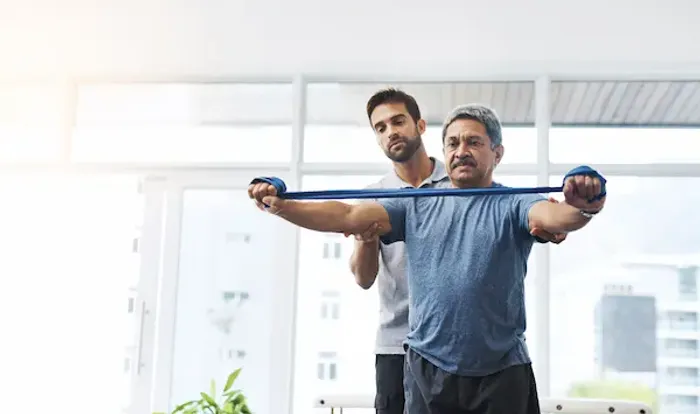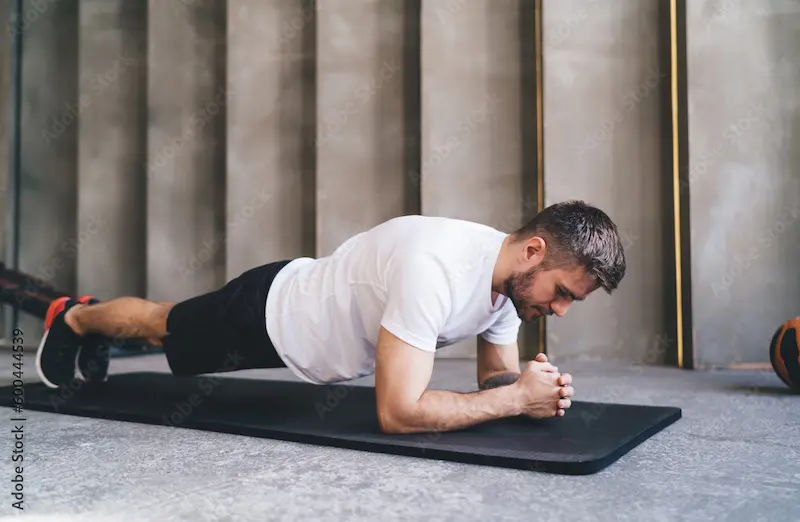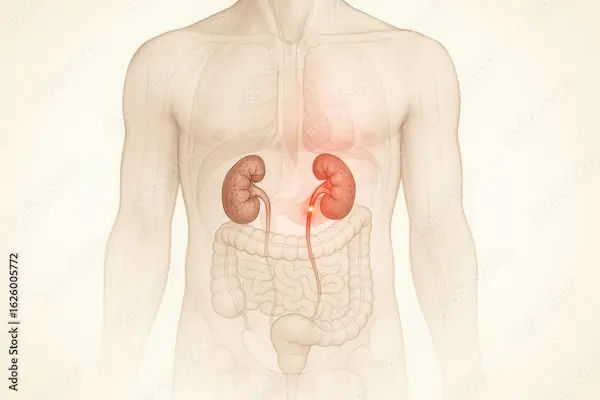Guide to Category/physiotherapy
Explore our comprehensive guide to physiotherapy and learn how evidence-based exercise, manual therapy, and home programmes can relieve pain, restore movement, and improve quality of life. Discover what to expect in your sessions, when to seek medical advice, and how to choose the right physiotherapist in India.


Introduction
If you’ve been told to “try physiotherapy” but aren’t sure where to start, this guide to physiotherapy is for you.
Physiotherapy (also called physical therapy) helps people of all ages recover from pain, injury, surgery, and long-term
conditions by restoring movement, building strength, and boosting confidence. In this comprehensive resource, we’ll
demystify the physiotherapy journey, from your first session and common techniques to evidence on what truly works.
You’ll learn how to choose the right physiotherapist, the role of home exercises, and practical tips for desk work, sports,
and everyday life. We’ll also highlight when to seek medical advice and how digital physiotherapy can make care more
convenient. Whether you’re facing back pain, a sports injury, or post-surgery rehab, consider this your friendly, science-
backed roadmap to better movement and less pain.
What Is Physiotherapy? Understanding the Physiotherapy Landscape
Physiotherapy is a healthcare discipline focused on restoring and optimising movement, function, and quality of life
through exercise, manual therapy, education, and behaviour change. It’s not just about pain relief, it’s about enabling
you to move and live better. That’s why physiotherapy is often recommended for musculoskeletal problems such as
back, neck, or knee pain, post-operative recovery after joint replacements, neurological conditions like stroke or
Parkinson’s disease, cardiopulmonary rehabilitation, and more.
Physiotherapy vs Physical Therapy—Are They Different?
In most countries, “physiotherapy” and “physical therapy” are used interchangeably. In India and the UK,
“physiotherapy” is common, while in the US, “physical therapy” is the norm. The training, scope, and goals are
comparable.
Core Goals: Restore Movement, Reduce Pain, Build Strength
The main objectives are to reduce pain through graded activity, improve joint mobility and muscle strength, correct
movement patterns, and build capacity for work, sport, or daily tasks.
The Rehab Team: PTs, Physicians, Occupational Therapists, and You
Effective physiotherapy often involves a team, your physiotherapist, your doctor, sometimes an occupational therapist
or sports trainer, with you at the centre. Education and self-management are key components.
Physiotherapy works best when you treat it as training rather than treatment; small, steady gains compound over time.
Consult Top Physiotherapists
Who Benefits from Physiotherapy and When to Start?
Physiotherapy can help people across age groups manage pain, improve movement, and regain independence.
Common Conditions Treated (Back, Neck, Knee, Shoulder, Neurological)
Physiotherapy addresses a wide range of conditions that affect movement, strength, and daily function. Here’s an overview of some of the most common issues where physiotherapy can make a real difference.
- Musculoskeletal: Chronic low back pain, neck pain, shoulder impingement, knee osteoarthritis, plantar fasciitis. Active
rehabilitation works better than rest for most cases. - Post-operative: Total knee or hip replacement, ACL reconstruction, structured exercise improves recovery and reduces
complications. - Neurological: Stroke, Parkinson’s disease, multiple sclerosis, task-specific training and balance exercises enhance
function. - Cardiorespiratory: COPD and post-COVID weakness, breathing and graded exercise aid endurance.
- Pelvic health: Pregnancy, postpartum care, urinary incontinence, guided pelvic floor training can be effective.
Red Flags: When You Need a Doctor First
Severe trauma, unexplained weight loss, fever with back pain, progressive neurological symptoms (such as leg weakness
or numbness), chest pain, or suspected fractures require urgent medical evaluation before starting physiotherapy.
Early vs Delayed Care: Why Timing Matters
For low back pain, early active advice and exercise reduce the risk of chronic symptoms. In sports injuries, guided loading often speeds recovery compared with prolonged rest.
If pain limits basic function for more than one to two weeks despite rest and simple care, start physiotherapy sooner. If
symptoms persist beyond two weeks, consult a doctor online with Apollo 24|7 for further evaluation.
Techniques in Physiotherapy: What Really Works
Physiotherapists use a combination of active and passive techniques to promote recovery.
Exercise Therapy and Graded Activity
Strong evidence supports exercise therapy, including strengthening, mobility, and aerobic exercises, for chronic low
back pain and knee osteoarthritis. Combining local strengthening with whole-body conditioning works best.
Manual Therapy and Soft-Tissue Techniques
Joint mobilisations and manipulations can offer short-term relief when combined with exercise and education,
particularly for neck and back pain. Soft-tissue techniques reduce muscle guarding and improve movement tolerance.
Modalities: Heat, TENS, Ultrasound—What’s the Evidence?
Heat and cold can help short-term symptom relief. TENS and ultrasound show mixed results; they may assist some individuals as adjuncts, not as stand-alone treatments. The core of physiotherapy remains exercise and education.
Education, Pain Neuroscience, and Self-Management
Understanding pain reduces fear and improves outcomes. Simple messages, keep moving, increase activity gradually,
and focus on function over pain scores, make recovery sustainable.
A practical rule, 70% of your effort should be active (exercise and practice), 20% education and habit change, and 10%
passive modalities.
Your First Visit and Beyond: The Physiotherapy Care Pathway
Every physiotherapy journey starts with an assessment and ends with functional independence.
Assessment: History, Movement Tests, and Goal Setting
Expect questions about your pain, function, sleep, and goals. Your physiotherapist will assess posture, range of motion,
strength, and movement patterns to tailor a plan that fits your needs.
Personalised Plans: Frequency, Duration, and Progress Markers
Typical schedules are one to two sessions per week for four to eight weeks for common issues, and longer for post-
operative or neurological rehab. A home programme with clear targets helps you track progress effectively.
Return to Work/Sport and Preventing Relapse
Rehabilitation is complete only when you can manage your daily or sporting demands. A good plan includes graded
exposure to real-world tasks and maintenance routines to prevent recurrence.
Ask your physiotherapist to co-write one to three “daily non-negotiables” (like 10-minute walks or sit-to-stand sets).
Consistency beats intensity.
Evidence, Safety, and Results: What the Science Says About Physiotherapy
Modern physiotherapy is rooted in scientific research and evidence-based care. Understanding what studies reveal about
its safety, effectiveness, and long-term outcomes can help you make informed decisions about your recovery.
What Evidence Supports Exercise and Manual Therapy?
Exercise and manual therapy form the foundation of physiotherapy treatment. Let’s look at the key evidence showing
how these approaches improve pain, mobility, and overall function.
- Chronic low back pain: Exercise therapy offers moderate improvements in pain and function. NICE recommends
exercise as first-line care, with manual therapy as an adjunct. - Neck pain: Exercise and education are effective; manual therapy may offer short-term benefit.
Safety Profile, Side Effects, and When to Modify Care
Physiotherapy is generally safe. Temporary soreness or fatigue is common as activity increases. Modify exercises if pain
spikes above 6/10, causes night pain, or worsens after 48 hours. Seek medical review for sudden neurological loss or
severe pain.
Measuring Outcomes that Matter to You
Track progress using personal goals (like climbing stairs or walking a distance) and validated tools such as the Oswestry
or Neck Disability Index.
Treat your recovery like a project, track two to three key outcomes weekly.
At-Home Care in Physiotherapy: Programmes, Ergonomics, and Telehealth
At-home care is vital for long-term success and consistency.
Home Exercise Programmes That Stick
Start simple and build gradually. For example, for back pain: 10-minute walks, bird-dogs, sit-to-stands, and plank holds,
five days per week. Adherence matters more than complexity.
Desk Ergonomics and Daily Movement “Snacks”
Adjust your workstation: screen at eye level, hips and knees at 90°, lumbar support in place. Take micro-breaks every
30–45 minutes for stretches and posture resets to reduce stiffness.
Digital Physio: Remote Monitoring and Video Visits
Telehealth physiotherapy works well for many conditions. Online follow-ups and app-based reminders improve
consistency, especially if you have a busy schedule or live in a remote area.
Link exercises to daily habits, like doing squats after each cup of tea, to build consistency naturally.
If you notice persistent pain or poor progress, book a physical consultation with a doctor via Apollo 24|7. If vitamin D
deficiency or diabetes may contribute to discomfort, Apollo 24|7 also offers convenient home test collections.
Choosing a Physiotherapist: Credentials, Costs, and Questions to Ask
Finding the right physiotherapist can make all the difference.
Qualifications and Specialties
Look for registered physiotherapists (BPT or MPT in India) and check if they specialise in musculoskeletal, sports,
neuro, cardiorespiratory, or women’s health physiotherapy.
Costs, Insurance, and Access in India
Session costs vary by location and clinic. Many insurance plans cover physiotherapy after surgery or injury. Ask about
home-visit and telehealth options to manage costs.
Checklist: How to Get the Most from Physiotherapy?
Prepare by bringing reports and clear goals. Ask practical questions like:
- “What are the top three exercises for me?”
- “How will we measure progress?”
- “What should I avoid right now?”
Commit to your sessions and track progress weekly. Before committing to a full package, request a two-week trial plan
with measurable goals to evaluate progress.
Conclusion
Physiotherapy empowers you to move with less pain and more confidence. By understanding the physiotherapy process, what to expect, which techniques work best, and how to integrate movement into daily life, you can turn short-term relief into lasting improvement. The strongest results come from consistent exercise rooted in your real-life goals, guided by expert support. Use telehealth options to stay consistent, and track your progress each week. If recovery stalls or warning signs appear, consult a doctor promptly. Define your goals today, book your first session, and take the first step towards stronger, pain-free movement.
Consult Top Physiotherapists
Consult Top Physiotherapists

Ms.jagritee Priyadarshinee
Physiotherapist And Rehabilitation Specialist
11 Years • MPT, M.SC, FNR
Guwahati
Apollo Hospitals G S Road, Guwahati

Ms Ramsha Rehman
Physiotherapist And Rehabilitation Specialist
1 Years • Bachelor of Physiotherapy
Gurugram
Care2Cure Physiotherapy Clinic, Gurugram

Dr. Pankaj Verma
Physiotherapist And Rehabilitation Specialist
12 Years • Master in Sports Physiotherapy
Bhubaneswar
Apollo Hospitals Old Sainik School Road, Bhubaneswar

Mr Bilal Jafri
Physiotherapist And Rehabilitation Specialist
2 Years • BPT , MPT
Gurugram
Nivaran Multispeciality Hospital, Gurugram

Ms. Neenu Sam
Physiotherapist And Rehabilitation Specialist
4 Years • BPT, PG Diploma in Facial Aesthetics
Bengaluru
Aesthetic Grandeur Clinic, Bengaluru
(25+ Patients)
Consult Top Physiotherapists

Ms.jagritee Priyadarshinee
Physiotherapist And Rehabilitation Specialist
11 Years • MPT, M.SC, FNR
Guwahati
Apollo Hospitals G S Road, Guwahati

Ms Ramsha Rehman
Physiotherapist And Rehabilitation Specialist
1 Years • Bachelor of Physiotherapy
Gurugram
Care2Cure Physiotherapy Clinic, Gurugram

Dr. Pankaj Verma
Physiotherapist And Rehabilitation Specialist
12 Years • Master in Sports Physiotherapy
Bhubaneswar
Apollo Hospitals Old Sainik School Road, Bhubaneswar

Mr Bilal Jafri
Physiotherapist And Rehabilitation Specialist
2 Years • BPT , MPT
Gurugram
Nivaran Multispeciality Hospital, Gurugram

Ms. Neenu Sam
Physiotherapist And Rehabilitation Specialist
4 Years • BPT, PG Diploma in Facial Aesthetics
Bengaluru
Aesthetic Grandeur Clinic, Bengaluru
(25+ Patients)
More articles from General Medical Consultation
Frequently Asked Questions
Q1. How many physiotherapy sessions do I need for lower back pain?
Most people benefit from four to eight weeks of physiotherapy with one to two sessions per week, combined with home exercises. Chronic cases may need longer, review progress every two to three weeks.
Q2. Can physiotherapy replace surgery for knee osteoarthritis?
Not always, but targeted exercise therapy can reduce pain and improve function, delaying or avoiding surgery in some cases. Try a structured six to twelve-week programme before deciding on surgery.
Q3. Is telehealth physiotherapy effective?
Yes. Remote guidance and follow-ups improve adherence to home exercises and help maintain motivation. Combine virtual care with occasional in-person assessments.
Q4. Are there risks or side effects?
Temporary soreness or fatigue is common as your body adapts to exercise. Seek medical advice for worsening symptoms, night pain, or neurological changes.
Q5. What should I bring to my first session?
Bring medical reports, a list of current medications, and a few specific goals such as “walk 3 km” or “sit comfortably for 45 minutes.” This helps your physiotherapist create a focused treatment plan.




